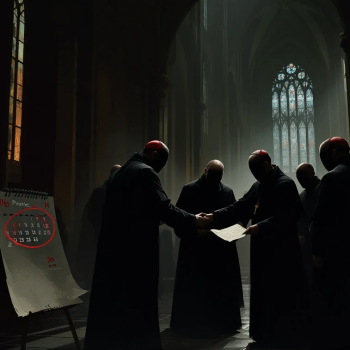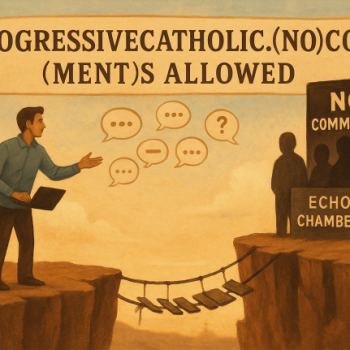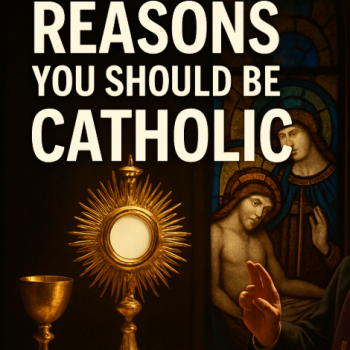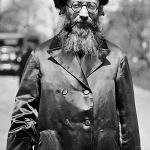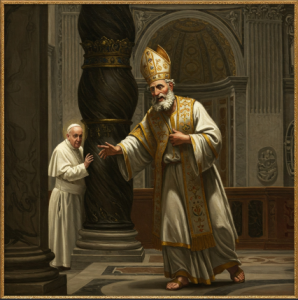
Where Peter is, there is the Church.
In my last article, I compared the culture war to spiritual warfare. As anticipated, many on the Left pushed back, with some even accusing me of engaging in “hate” for advocating the bodily protection of confused youth. One critic cited two counterexamples from Catholic writers. The first, When the Scales Fell from Our Conservative Catholic Eyes by Mike Lewis, founding editor of Where Peter Is (WPI), was followed by A Follow-Up to Friday’s Post by Mark Shea. For the record, Shea’s article highlights Lewis’s piece while also adding commentary from Deacon Steve Greydanus.
All in all, Mr. Lewis, Mr. Shea, and Deacon Greydanus lump all conservative Catholics into one broad anti-Francis, pro-MAGA category. I do not consider myself either anti-Francis or pro-MAGA, though I sometimes criticize Pope Francis and voted for Donald Trump. That alone makes me persona non grata in the eyes of these three gentlemen.
However, as I browsed the WPI website, one question kept entering my mind: Will WPI survive the post-Francis papacy? Given the website’s origin and content, I highly doubt it. Allow me to explain.
The Origin of Where Peter Is
According to the website’s About page, WPI was created in response to criticisms of Pope Francis from a small yet highly influential cadre of “radical traditionalists and dogmatic rigorists” among Catholic laypeople, priests, bishops, and cardinals. The site’s mission states:
The authors at this site have decided to take up their challenge, both by providing links to resources from other sites and by providing original essays that argue in favor of the orthodoxy and faithfulness of the Holy Father. Additionally, we’ll write about the major themes and important topics that surround the Church, especially in light of the pontificate of Pope Francis.
Where Peter is, there is the Church.
Any observant reader should recognize the polemical language above. Labeling intellectual opponents as “radical traditionalists” and “dogmatic rigorists” poisons the well of intellectual discourse from the outset. In this spirit, WPI appears to be more of a reaction against tradition and dogma than a defense of “the orthodoxy and faithfulness of the Holy Father.”
Where Peter Is, There Is the Church
The phrase “Where Peter is, there is the Church” originates from St. Ambrose’s Commentaries on Twelve of David’s Psalms, where he states:
It is to Peter himself that He says, “You are Peter, and upon this rock I will build My Church [Mt 16:18].” Where Peter is, there is the Church. And where the Church is, no death is there, but life eternal.
According to St. Ambrose, the pope, as the successor of St. Peter, maintains the Church’s unity. WPI rightly aligns itself with this sentiment. At times, it adequately defends “the orthodoxy and faithfulness of the Holy Father.” Unfortunately, it also extends beyond this role by aligning itself with a singular pope’s vision—specifically Pope Francis’—particularly when that vision reflects more progressive and “pastoral” approaches to moral and social matters. Because of this, Where Peter Is might be more appropriately renamed Where Francis Is.
The Future of WPI
While reading WPI’s content, I remain unconvinced that its contributors would declare, “Where Peter is, there is the Church” under the pontificate of Benedict XVI, St. John Paul II, or, heaven forbid, Pius XII. The site, in its defense of Pope Francis, frequently engages in progressive tropes by emphasizing classism, systemic racism, and marginalized voices. It also criticizes those who do not prioritize these themes as anti-Francis and extreme “right-wing” figures. This includes respected Catholic leaders like Bishop Robert Barron, Archbishop Charles Chaput, and Scott Hahn. These men advocate for family values, marriage, and opposition to abortion—the so-called “culture war” issues—yet they also support the current pope. Furthermore, both Benedict XVI and St. John Paul II were considered “culture warriors” for their strong defense of family values, marriage, and opposition to abortion.
If the next pope follows in the footsteps of Benedict XVI or St. John Paul II, will WPI cease to exist? If the next pope fails to focus on issues of social justice, will WPI transition from defending to criticizing? One might ask these questions after reading the words of Mike Lewis during a 2021 interview about the founding of WPI. In this interview, he states:
I know I am late to the game. I don’t deserve any awards for being outspoken against the evil of systemic racism. But I am committed to doing everything I can to promote the voices of Catholic people of color and those from marginalized cultures.
What if the next pope does not share Lewis’s vision?
Final Thoughts
Given WPI’s content, its future hinges entirely on whether its editorial staff deems the next pope worthy of defending. If the next pontiff continues Pope Francis’ progressive trajectory, emphasizing contemporary social issues, the site will persist. However, if the new pope reflects the “culture warrior” stance of Benedict XVI or St. John Paul II, WPI will struggle to maintain its current identity. Perhaps it will rebrand itself as Where Francis Is in his honor.
Thank you!
If you liked this article, please leave your comments below. I am very interested in your opinion on this topic.
Read The Latin Right’s other writing here.
Please visit my Facebook page and IM your questions (and follow my page) or topics for articles you would like covered.
Also, please subscribe my YouTube page for updates on upcoming articles.








